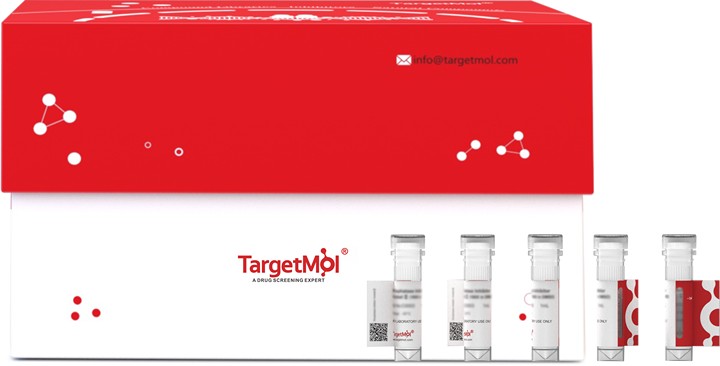 您的购物车当前为空
您的购物车当前为空
NAD(P) transhydrogenase/NNT Protein, Human, Recombinant (His)
一键复制产品信息NAD(P)+transhydrogenase (NNT) is located in the inner mitochondrial membrane and catalyzes a reversible hydride transfer between NAD(H) and NADP(H) that is coupled to proton translocation between the intermembrane space and mitochondrial matrix. NNT activity has an essential role in maintaining the NADPH supply for antioxidant defense and biosynthetic pathways. Structurally, NNT is composed of three domains; domains I and III are hydrophilic and have binding sites for NAD and NADP, respectively, while domain II is hydrophobic and is a transmembrane pathway through which protons translocate. NNT forms dimers, whose monomers act in an anti-phase way; domain III (NADP(H)- binding) flips, allowing proton translocation across the inner mitochondrial membrane one moment and favoring hydride transfer between NAD(H) and NADP(H) the next. And NNT pathophysiological roles after the discovery of a spontaneous Nnt mutation in C57BL/6J mice. And Nnt silencing reduced the growth of cancer cell lines, suggesting that NNT might be a therapeutic target in some cancers.

NAD(P) transhydrogenase/NNT Protein, Human, Recombinant (His)
一键复制产品信息| 规格 | 价格 | 库存 | 数量 |
|---|---|---|---|
| 5 μg | ¥ 462 | 6-8日内发货 | |
| 10 μg | ¥ 750 | 6-8日内发货 | |
| 20 μg | ¥ 1,190 | 5日内发货 | |
| 50 μg | ¥ 2,260 | 5日内发货 | |
| 100 μg | ¥ 3,790 | 5日内发货 | |
| 200 μg | ¥ 6,390 | 5日内发货 | |
| 500 μg | ¥ 12,800 | 5日内发货 | |
| 1 mg | ¥ 19,200 | 5日内发货 |
产品信息
| 生物活性 | Activity has not been tested. It is theoretically active, but we cannot guarantee it. If you require protein activity, we recommend choosing the eukaryotic expression version first. |
| 产品描述 | NAD(P)+transhydrogenase (NNT) is located in the inner mitochondrial membrane and catalyzes a reversible hydride transfer between NAD(H) and NADP(H) that is coupled to proton translocation between the intermembrane space and mitochondrial matrix. NNT activity has an essential role in maintaining the NADPH supply for antioxidant defense and biosynthetic pathways. Structurally, NNT is composed of three domains; domains I and III are hydrophilic and have binding sites for NAD and NADP, respectively, while domain II is hydrophobic and is a transmembrane pathway through which protons translocate. NNT forms dimers, whose monomers act in an anti-phase way; domain III (NADP(H)- binding) flips, allowing proton translocation across the inner mitochondrial membrane one moment and favoring hydride transfer between NAD(H) and NADP(H) the next. And NNT pathophysiological roles after the discovery of a spontaneous Nnt mutation in C57BL/6J mice. And Nnt silencing reduced the growth of cancer cell lines, suggesting that NNT might be a therapeutic target in some cancers. |
| 种属 | Human |
| 表达系统 | E. coli |
| 标签 | N-6xHis |
| 蛋白编号 | Q13423 |
| 别名 | NNT,NAD(P) transhydrogenase |
| 氨基酸序列 | Met880-Lys1086 |
| 蛋白构建 | Met880-Lys1086 |
| 蛋白纯度 | Greater than 95% as determined by reducing SDS-PAGE. (QC verified) |
| 分子量 | 30 KDa (reducing condition) |
| 内毒素 | < 0.1 ng/µg (1 EU/µg) as determined by LAL test. |
| 缓冲液 | Supplied as a 0.2 μm filtered solution of PBS, 10 mM GSH, 50% Glycerol, pH7.4. |
| 存储 | Lyophilized powders can be stably stored for over 12 months, while liquid products can be stored for 6-12 months at -80°C. For reconstituted protein solutions, the solution can be stored at -20°C to -80°C for at least 3 months. Please avoid multiple freeze-thaw cycles and store products in aliquots. |
| 运输方式 | In general, Lyophilized powders are shipping with blue ice. Solutions are shipping with dry ice. |
| 研究背景 | NAD(P)+transhydrogenase (NNT) is located in the inner mitochondrial membrane and catalyzes a reversible hydride transfer between NAD(H) and NADP(H) that is coupled to proton translocation between the intermembrane space and mitochondrial matrix. NNT activity has an essential role in maintaining the NADPH supply for antioxidant defense and biosynthetic pathways. Structurally, NNT is composed of three domains; domains I and III are hydrophilic and have binding sites for NAD and NADP, respectively, while domain II is hydrophobic and is a transmembrane pathway through which protons translocate. NNT forms dimers, whose monomers act in an anti-phase way; domain III (NADP(H)- binding) flips, allowing proton translocation across the inner mitochondrial membrane one moment and favoring hydride transfer between NAD(H) and NADP(H) the next. And NNT pathophysiological roles after the discovery of a spontaneous Nnt mutation in C57BL/6J mice. And Nnt silencing reduced the growth of cancer cell lines, suggesting that NNT might be a therapeutic target in some cancers. |





 |
|